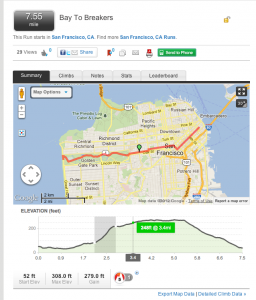In the vast and ever-expanding landscape of online content, where every click leads to a new discovery, the challenge for businesses and marketers is clear: capturing and maintaining attention.
The conventional static content that once stood as the cornerstone of digital communication evolved into interactive content.
In this exploration, we plunge into the intricacies of this content evolution, armed with data, insights, and a roadmap to navigate the shifting landscape.
The power of interactivity within a Marketing strategy
Let’s ground our discussion in data.
Recent surveys have unveiled a significant shift in consumer preferences. According to a survey conducted by the Content Marketing Institute (CMI), a staggering 79% of marketers reported that interactive content enhances message retention.
This same survey also reveals that interactive content delivers a remarkable 52.6% increase in engagement, reinforcing that people are keen on this format.
The numbers don’t merely suggest a preference; they are shouting out a demand for engagement—and brands are taking notice. In another survey, 88% of professionals agreed that interactive content plays a vital role in setting their brands apart.
Many major brands have already incorporated interactive content into their strategies, such as Apple with its interactive iPhone pages, as mentioned in this post.
Of course, you don’t need to be on the scale of Apple to leverage interactivity in your marketing strategy. By simply transforming a static e-book into an interactive experience, for instance, you can boost your metrics in retention, engagement, conversions, and even data tracking.
Let’s dive deeper into this topic.
Benefits of interactive content that static content simply cannot deliver
As we weigh the scales of content creation, it’s imperative to acknowledge the merits and pitfalls of static content. Like a dependable lighthouse, static content offers stability; it’s easy to create, control, and promote. Additionally, it often comes at a lower cost, making it an appealing choice.
However, its Achilles’ heel lies in its inflexibility.
Once created, it remains unalterable, lacking the dynamism that contemporary audiences demand. When compared to the myriad of content formats available on websites and social media, static content may appear uninspiring to users who have been bombarded with content from the moment they unlock their phones or laptops.
Static content is like a frozen portrait, while the digital landscape craves a dynamic canvas.
Moreover… there are certain things that static content simply cannot accomplish—and that’s where things start to get interesting.
Read also: How do we use interactive content in Rock Content’s marketing strategy?
The shift from consuming information to experiencing it
Imagine a scenario where your audience isn’t a passive observer, but rather an enthusiastic participant. This is the core of interactive content.
Interactive content demands engagement, encourages exploration, and offers freedom. The shift from consuming information to experiencing it is the heartbeat of this evolution.
You can’t add a calculator to a static website, for example. Or add more information in your infographic as your client clicks and explores the content.
Interactive content isn’t just a medium; it’s an interactive journey. It not only attracts attention but delivers messages effectively and educates the audience by making them part of the narrative.
The gold behind the interactive content experience: data collection
Let’s not forget the gold business behind these engaging elements in your content: data collection.
When users actively participate in the content narrative, they willingly share crucial insights into their digital behavior, preferences, and areas of interest—something that’s considerably more challenging to achieve with static content.
Embracing this approach empowers us to craft content that generates crucial information, benefiting not only improved marketing results but also the enhancement of various organizational processes.
Taking personalized optimization to a whole new level
Interactive tools, such as quizzes and assessments, redefine how marketers understand their audience. By gathering insights into preferences, likes, and expectations, these tools enable the creation of highly personalized marketing strategies.
It’s not just about reaching your audience; it’s about connecting with them on a personal level.
Should I simply disregard static content, though?
If interactive content is what every marketer should use, now you must be wondering: “Why am I using a static format?”
Static content, with its reliability, certainly has its place, but the modern landscape demands more. The harmonious coexistence of static and interactive content isn’t just a suggestion; it’s a strategic necessity.
As we navigate these waters, finding the right balance becomes crucial for success.
You might be thinking, “Alright, I understand the importance, but I lack the resources to transition to interactive content.”
I’d like to give two valuable tips to help you with that:
- Consider exploring interactive content platforms. I highly recommend Ion.
It provides marketers with all the tools necessary to create memorable and effective interactive content experiences. Among its many benefits, Ion offers users:
- An approachable no-code creation experience
- More than 180 dynamic templates that you can customize and make your own
- A suite of managed services to help you make the most of your content experiences
You can get a free demo here.
- Read this article on how to create interactive content even if you’re not familiar with HTML. It can offer you a fresh perspective on interactive resources, and you’ll find it’s much more achievable than you might have thought.
Conclusion
Interactive content is not a revolution; it’s a renaissance.
As we conclude this exploration, remember that the future is non-binary: it’s not static or interactive; it’s a seamless integration of both.
Embrace interactivity, transform your content from a monologue into a dialogue, and watch as your audience not only consumes but actively engages.
To embark on your journey into interactive content creation, consider exploring Ion: a versatile tool designed to empower you in crafting engaging and interactive experiences.
The seas of content evolution are vast; set sail with the winds of interactivity at your back, and discover the boundless possibilities that await.
The future is interactive; are you ready to shape it?
Start creating interactive content with Ion and increase your marketing results!
Start creating interactive content with Ion and increase your marketing results!







